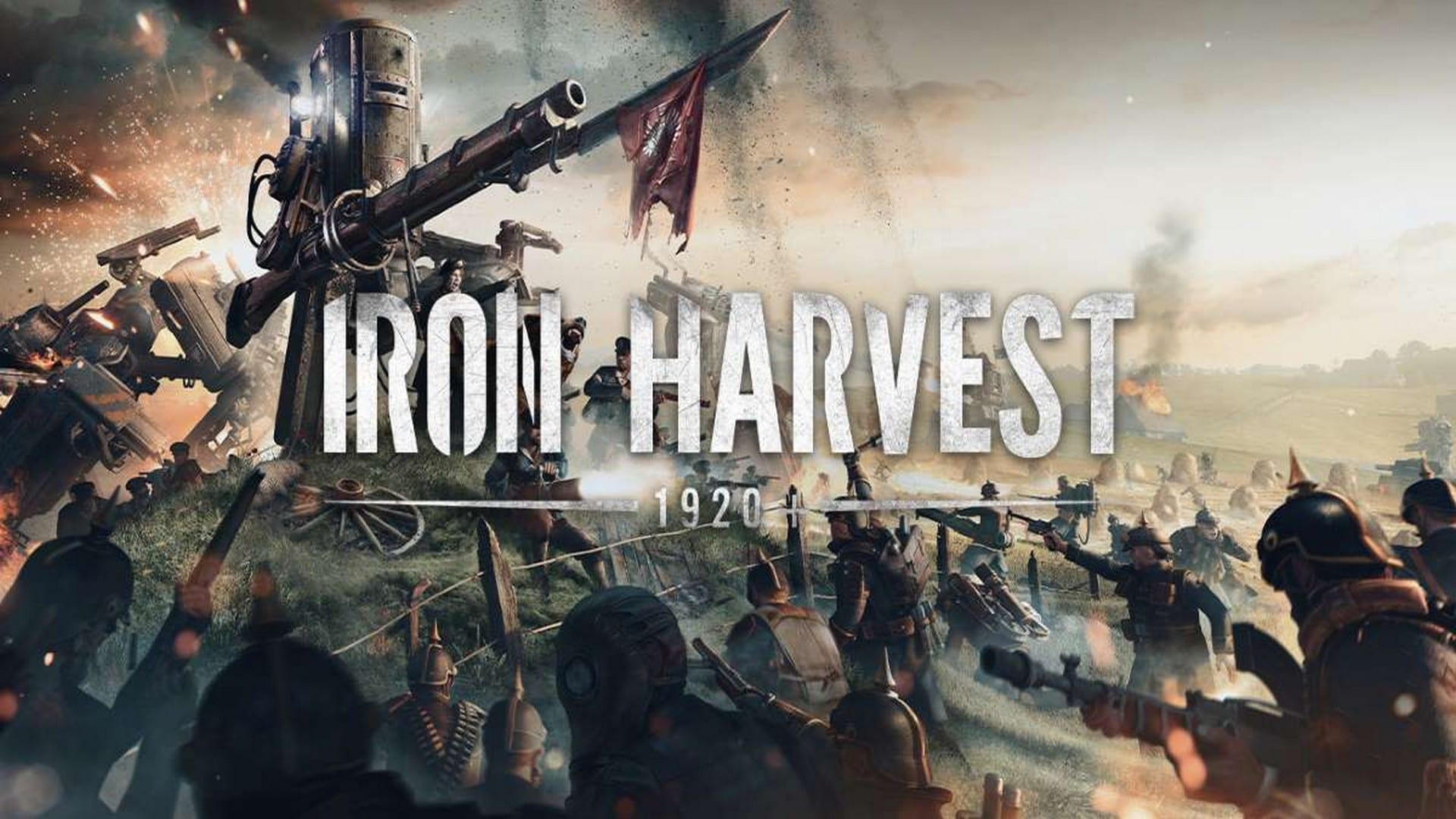
Iron Harvest (PC)
Iron Harvest is an RTS game that takes place in the World of 1920+ universe created by Polish artist Jacob Rozalski, that is finally being released to Steam following its successful Kickstarter a while ago. With an alternate history set after WWI, complete with differing technology such as mechs, Does Iron Harvest have enough firepower to set itself apart from its peers in the genre? Let’s find out.
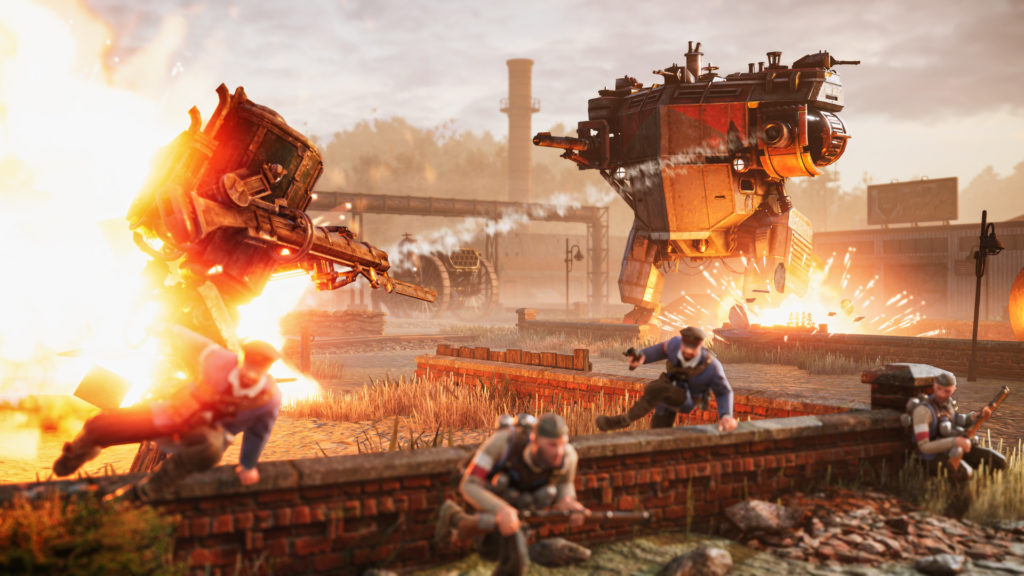
It’s 1920 and Europe is recovering from the brutal battles of the first World War. Cities are being rebuilt and in the countryside, the era of the Iron Harvest has begun as Farmers unearth the remains of the majestic walking machines that had fought on the battlefields of the Great War. In the midst of the post war chaos, a new shadowy threat appears that will put Europe on the brink of war again already. These shadowy figures are putting everything they can towards destabilization region in an attempt to seize control amidst the chaos of war.
The game has a full campaign mode, sporting stories from the perspective of Polania (Poland), Rusviet (Soviet Union) & Saxony (Germany). The 3 campaigns have around 8 missions that last a good while, each mission played was around an hour so plenty of game available in the campaign. The campaign is also filled with cinematics that tell a good story, each of the stories focuses on numerous characters with their own reason to fight. Only Polania is available to start with so you’ll need to unlock the others, tho these can be played via co-op too with a friend at a later date, and the first few missions will teach you the ropes. The usual AI skirmish modes and some additional challenges will give you some more practice before heading online for the true battles to test yourself against others. It would be best to play most of the campaign first, given the 3 armies each have their own units that will lead to different approaches for the same situations.
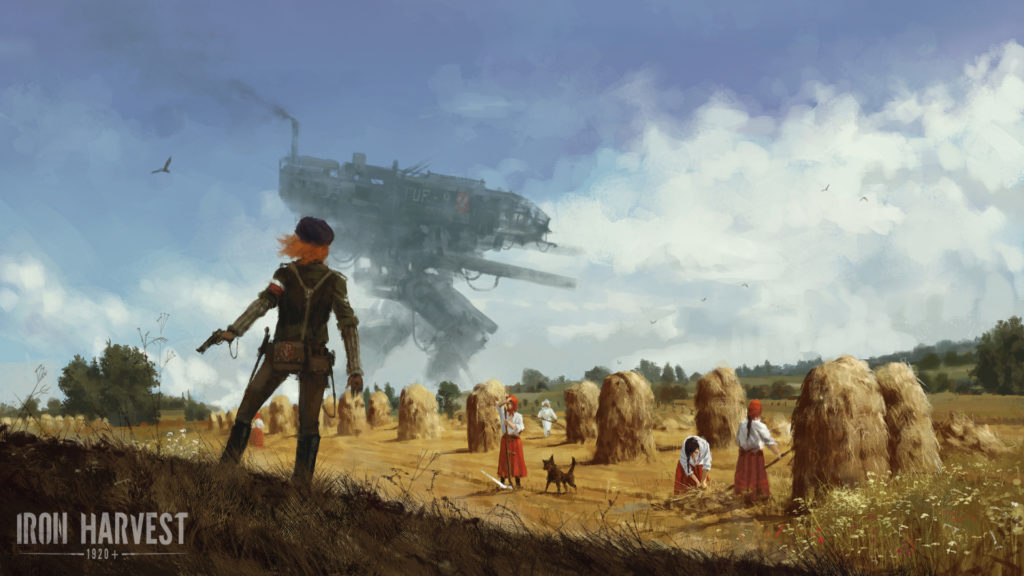
There’s no denying that Iron Harvest is quite the looker at times, with lush countrysides and war torn villages showing some detail when you get the chance to look. It’s when you zoom down to ground level that you’ll really appreciate the visuals, the amount of fine detail on the mech units in particular is noteworthy. All the little details you would expect are there, and the destruction they dish out to environment hasn’t been skimped on either. The only real stickler for me is the lack of variety within each unit, cinematics have this sticking out like a sore thumb when all the rifleman look the same for example, but it’s only noticeable then or when fully zoomed in so won’t be seen most of the time. Outside of that the infantry are well detailed and have their own uniforms to tell them apart from other units within the same army. Best part of the visuals? The war paintings you’ll see throughout are beautifully done and fit the games theme perfectly.
And so we get to performance. The game is playable enough at 4K/High on my system (R51600/16GB/5700XT) with noticeable framedrops occasionally. Dropping down to the usual Ultrawide didn’t change things too much, the noticeable drops became stutters which is an improvement – but it wasn’t completely smooth. There’s plenty of options to tinker with should you want to go that route to boost performance, which playing the game in it’s standard aerial cam could actually mask easily enough. Personally I just left as is, frames never seemed to go below 45 so the battles weren’t affected too much and it’s worth the detail when zooming to ground level.
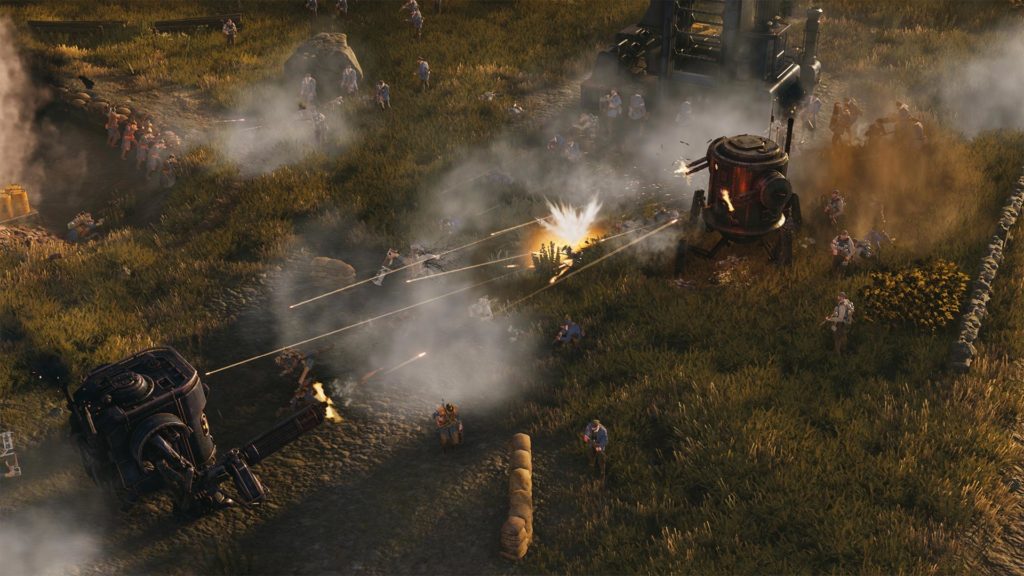
Anyone that has played something like Company of Heroes will be able to slot right into this as it seems to follow a similar template, with its own twist to the formula here & there. Battles will generally begin with you building up your base and sending early units out to cap some resource points. These comprise of Iron & Oil for the most part, and are key to funding your war machine – so long as you keep an eye on the population cap. Your enemies will be doing the same, so finding the strategic areas to bunker down on each map is usually key to counter attacking for victory. Luckily if you do get almost annihilated, standard infantry & engineers can be built from the headquarters to at least continue the fight. Engineers are crucial, allowing you to build defences and repair mechs & structures, so always have some around.
One of the main draws of the game is in the mechs, which replace the role of tanks in our universe. The mechs range from fast bipedal scouts armed with something like a tankgewehr rifle suited for ranged combat or bayonet melee up close. all the way to huge boss type machines commanded by generals that can smash through your lines without breaking a sweat. Each mech has a role to fill and special abilities when ranked up via combat, the Polanian Straznik for example is an anti-infantry unit and can be locked down like a turret once it becomes a veteran – you lose all mobility but gain weapon damage. As always Infantry is the backbone of any army, and their versatility in this game can make them the dark horse of any engagement. You can start the mission with a standard rifleman unit, but by the end they may have changed to machine gunner, grenadier, anti mech or even an engineer, by picking up the weapons of defeated foes. It’s this dynamic nature that makes the game as engaging as it is, allowing you to change up units & tactics on the fly to suit the situation.
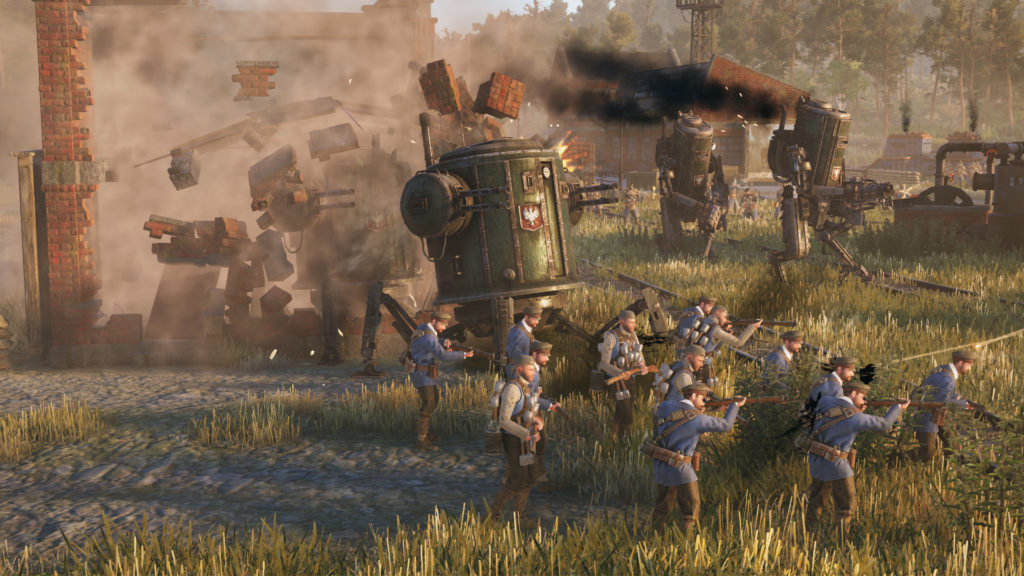
Iron Harvest doesn’t really change up the RTS formula, playing similar to it’s peers, but then it never set out to either. Instead it offers a meaty campaign with an engaging story, 3 distinct factions to master, awesome visuals & detail and the ability to crush your foes with armies of 1920’s Mechs. This game should be on the radar of anyone with even a passing interest in the RTS genre, with plenty more battles in the works from the devs post-launch.
Summary
The beauty of rural Europe is trampled by the boots of soldiers & the hulking masses of Mechs in this alternate post-WWI strategy. War never changes.
Geoffrey Wright
Latest posts by Geoffrey Wright (see all)
- Axiom of Maria: Prologue (PC) - April 17, 2024
- Dragons Dogma 2 (PlayStation 5) - April 12, 2024
- Early Doors: Star Racer - April 3, 2024




